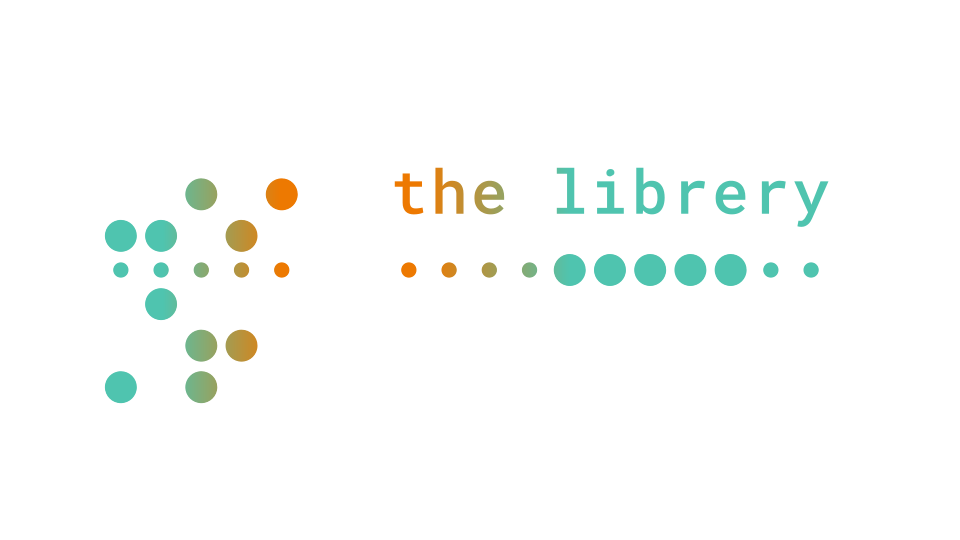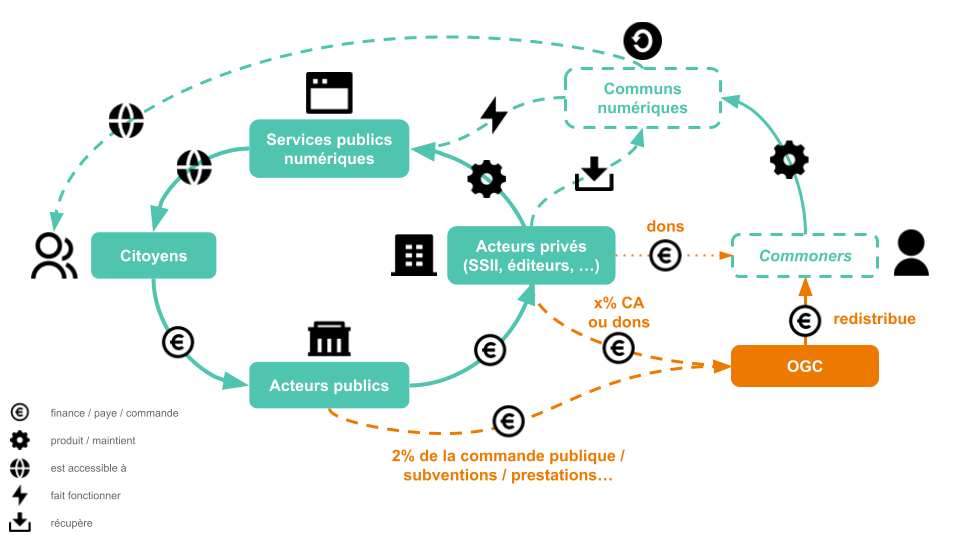
A sustainable financing mechanism and a collective management organization (CMO) by and for the authors of commons
Collect, pooling, and redistribution of funds
A strong requirement for transparency, non-profit making and parity
Diversified forms of support for the commons and commoners
The possibility of a label
General economy

OGC missions
- collect financial contributions from broadcasters
- identify common areas and their authors
- calculate what must be distributed (distribution keys)
- redistribute in rights / declare to URSSAF (to make life easier for authors)
- defend the cause and rights of authors of digital commons
- promote the status of authorship of digital commons
- introduce into the law clauses equivalent to those relating to the CNC / SACD / etc… (compulsory contribution regime?)
Financial contributions to support the economy of the commons
For the sake of pooling resources, the collective management organization must be able to receive different types of potentially “incoming” financial flows, public or private money:
Potential financial flows of public origin
- Plea for the principle of 2% common in public procurement on digital projects (inspired by “ 2% for 2 degrees ”, from the Rousseau Institute; or “ 1% for art in France”)
- Subsidy-type financial contributions from public institutions (IGN, ADEME, DINUM, etc.)
- Intervention at European level to support digital commons, such as NGI, NLnet, or projects such as EDIC
Potential financial flows of private origin
- Financial contributions (donation type) from certain private companies benefiting from/disseminating digital commons
- Services such as code audits, sourcing , etc.
- Advocacy for the principle of a mandatory minimum contribution obligation - or royalty - for industries whose activity is based on the extensive exploitation of strategic digital commons
Governance conditions
The commons falling both in the public sphere and in the private sphere, it is desirable that all parties can be represented within the OGC, however ensuring good representation of authors/individuals, given that the mission of the OGC is good at defending them
As a structure defending a sector (the commons) the OGC has more legitimacy as a private law structure, provided that the different stakeholders can be fairly represented
Include authors as well as publishers, funders and broadcasters of digital commons into the governance
Structural conditions
On the basis of the criticisms made of cultural OGCs (see Benhamou) we can list some necessary (but not sufficient) conditions to avoid certain shortcomings of historical OGCs identified by observers and the academic field:
- Management fees not exceeding 5% to 10%
- Monitoring and automation of author registration and remuneration
- Capping of salaries of OGC managers
- Representation of all authors (1 person == 1 vote)
- Total transparency of governance and operation, particularly regarding the choice and implementation of distribution keys
Operating equilibrium (assumptions)
Operating costs
With a full team (5 full-time people, see further in the “Reflections on governance” section) with salaries of €4,000 net/month, offices, and some additional services (accounting, subscriptions, services online…) :
as a first approximation the total operating and management cost would be around €550k/year.
Collect
If we maintain operating and management costs around 10%, this means that the OGC must be able to collect €5.5 million/year.
Starting from a base of “common 2%” on digital projects, this collection amount corresponds to a set of digital projects whose cumulative budgets would represent €275 million / year before contribution to the commons.
Redistribution
In summary, by applying the principle of “common 2%” on a set of digital projects to the tune of €275 million / year, the OGC would be able to redistribute: €5.5 million (collected) - 0.55 million € (management fees)
soit i.e. a redistribution of €4.95 million / year to digital commons.
Possible legal vehicles
Different types of legal structures can be imagined to fulfill the missions of The Librery, with the common point of being non-profit or at least limited profit.
- The Collective Management Organization
- The Collective Copyright Management Society
- The Foundation
- The "Fiducie" (or trust)
- The Cooperative Society of Collective Interest (SCIC in France)
- THE Public Interest Group (GIP in France)
- The "Mutuelle"
- The Investment fund
- The Endowment fund
- The Association / NGO (French 1901 law)
The label as an incentive
The existence of a legitimate organization for all stakeholders in the digital commons would make it possible to imagine the creation of a “ common label ”, which the organization could issue to projects and structures.
The notion of “common labels” can be an interesting area to develop to encourage administrations and businesses to contribute up to 2% of their digital projects budgets.
The notion of label raises the questions of objective criteria allowing a digital common to be qualified as such.
The other counterpart of the notion of label would be to be able to identify and monitor economic valuation indices (financial, time allocated, savings, etc.) making it possible to better situate the contributions of digital commons within the industrial sector.